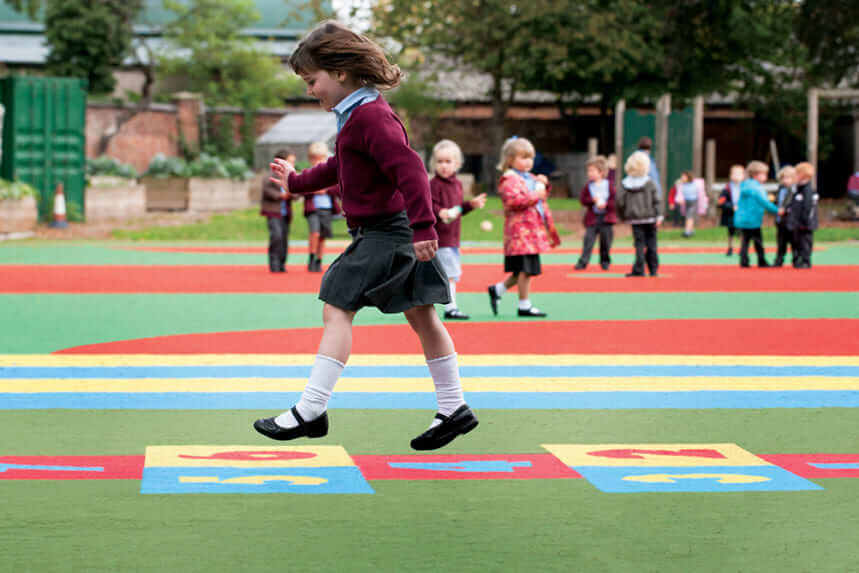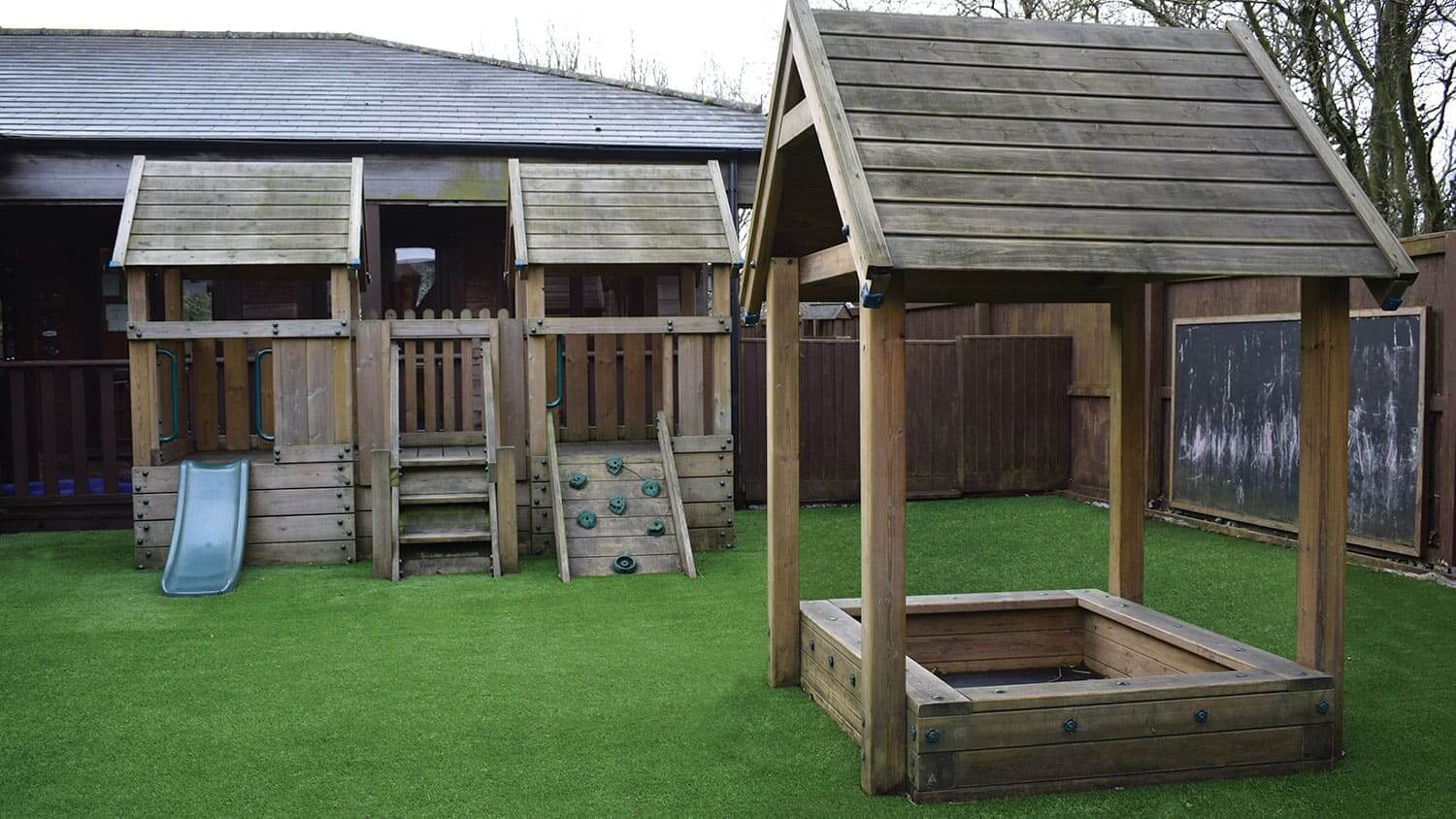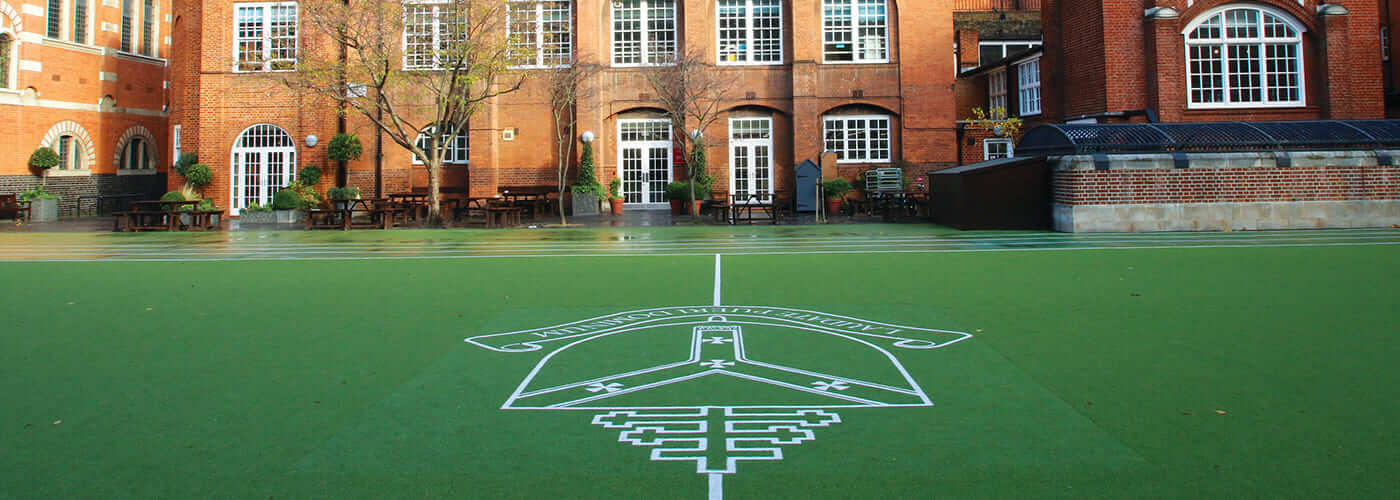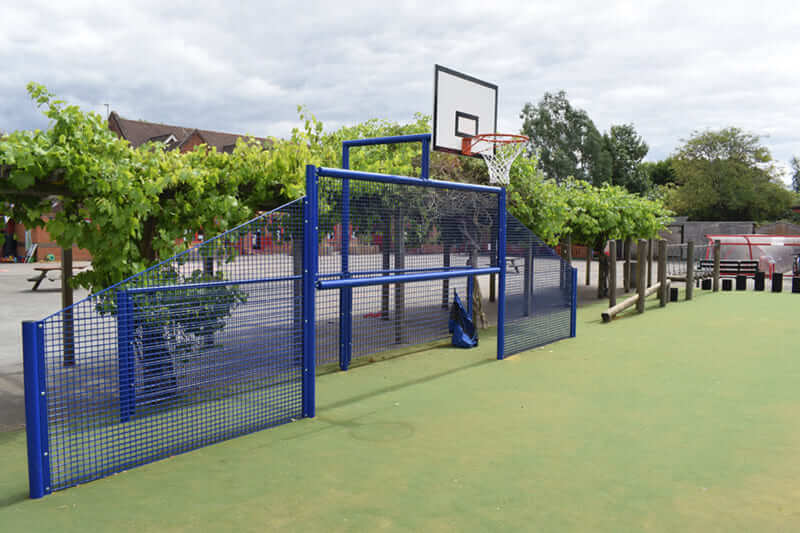S&C Slatter offers an expert one-stop solution playground construction and refurbishment
Read on to learn more about playground construction, or get in touch to discuss your needs.

Whether new build, refurbishment or enhancement, no project is too small or too large, and our dedicated in-house team will guide you through every stage of your project, from initial enquiry through to completion and aftercare.
It might be a sand-dressed artificial turf multi-use games area, like the one we constructed at Westminster Cathedral Choir School, an artificial grass activity track, such as the one Hungerford Primary School implemented to enable their students to undertake the daily mile, or conversion from natural grass to all-weather play area.
Designing and installing play areas for schools, nurseries, public spaces and holiday parks, we pride ourselves on both technical excellence and creative innovation, producing genuinely bespoke proposals to each and every client.
For a free consulation Call or email us for an informal chat about your play area needs.
Even the most durable surfaces will require resurfacing after years of weathering the ‘playground charge’!
Once a playground has come to the end of its useful life, we can undertake refurbishment works to refresh and resurface the playground, whether restoring to its original layout, or upgrading to an alternative style and surface.
The need for eventual refurbishment can of course be delayed, by ensuring sufficient maintenance is undertaken to maximise the lifespan of your playground.
Our dedicated maintenance division will advise on what steps can be taken to repair and refresh your playground to maximise safety and durability, prior to the need for refurbishment.

As principal contractor members of The Sports and Play Construction Association (SAPCA), we know that it is vital to implement and complete a playground construction project to the very highest standards.
Key stages of the construction process for a new build playground will include:
Site survey
Our team will conduct a survey of the site, taking into account space, location and topography, considering options to meet your needs and requirements.
Design
Following the site survey and consultation, we’ll produce bespoke design options to help you visualise your new playground. Once a design is agreed, the necessary technical drawings will be drawn up ready for construction.
Environmental considerations
We’ll provide environmental mitigation methods to help you create a sustainable facility, such as managing water run-off and drainage.
Health and safety
Through our dedicated in-house health and safety manager, a bespoke plan will be created to ensure construction is carried out on-site employing health and safety best practice that meets all legislative requirements.
Earthworks
Any required groundworks will be undertaken to prepare the land, ready to support the surface type chosen.
Drainage
An appropriate drainage system will be implemented appropriate to the chosen surface type, to prevent water logging and ensure the surface performance and safety is not compromised by poor weather.
Sub-base and base
The base and sub-base layers and materials will vary based on the overall design and surfacing of your playground. Materials will be carefully chosen to best support the overall surface and drainage system, providing maximum durability and safety.
Shockpad
A shock pad or shock absorbency layer may be implemented, depending on the inherent absorbency of the playground’s surface layer.
Playground surface
There are a variety of surfaces suitable for outdoor play areas and classrooms. These include artificial grass, needle-punched carpet, natural grass, macadam, paving and grading stone. Our team will advise on the surface(s) that are best suited to your needs.
Playground equipment
Whether a full scale wooden adventure area, a play wall system with basketball hoops or a simply sporting equipment for P.E. lessons, we can source and install high-quality playground equipment to maximise the interactive educational opportunities for students.
Ancillary equipment
Providing the finishing touches to your new play area may include the design and installation of perimeter fencing or floodlighting systems to maximise safety and usage.

Playgrounds can vary in type and surface, all tailored to the needs of those who will use it, how it will be used and the space available.
We design and build a number of different outdoor spaces for learning and play:
Our specialist in-house technicians will define, based on usage and cost, the best surface type for your needs.
Options include:
Check out a selection of our playground construction case studies or contact our dedicated play division to discuss your project needs.
Artificial grass is commonly utilised in play areas due to the durability and safety of synthetic grass fibres over natural grass. Designed to be free-draining, artificial turf can be used to create an all-weather play area, with performance and usage unhampered by weather in the way that natural grass can be – plus it doesn’t require sunlight!
Artificial grass can be ideal to create long-lasting, safe play areas for use all year round, such as this small play area installation at Burhill Primary, Nursery and Children’s Centre.
Sand-dressed artificial turf, which utilises sand as a stabilising and performance enhancing infill material, is also perfect for outdoor play areas that will be used for recreational sport. Westminster Cathedral Choir school utilised sand-dressed artificial turf for their multi-use games area, suitable for both sport and play. Artificial turf is more suited to pitch style recreational sport and athletics.
Polymeric and macadam can equally be used for recreational sport and play, and are generally more durable than artificial turf, suitable for heavy recreational use as well as informal sport. These surfaces are ideal for court style sports such as tennis, basketball and netball, as well as small sided football. We constructed a polymeric multi-use games area and playground at St. Nicolas C of E Junior school, durable enough to be utilised during playtime, the playground provides a running track, netball courts and 5-aside football pitch.
The cost of a new playground will depend on the scope of works required and surfacing system.
For example, a new sand-dressed multi-use play area may cost £140,000+ and a small conversion to an artificial grass area for play may cost as little as £20,000.
There are a number of factors which can vastly impact the overall cost of playground construction, including:
The cost for playground resurfacing is often significantly lower, due to much of the infrastructure (foundations, floodlighting, civil engineering) already being in place.
Please get in touch if you’d like an example of a detailed breakdown of project costs by stage, or would like to discuss a specific proposal for your needs.
Although some synthetic surfaces, like artificial grass, can look a lot like natural turf, they’re made for more than just their aesthetic qualities. Synthetic surfaces deliver safe, durable, all-weather facilities for recreational play and sport. The carefully constructed surface is designed for consistency, safety and longevity. The bonus is that they require less maintenance, and don’t rely on the weather to function, unlike natural turf play areas.
Natural turf can only take so much in a given week, for example when used for sport, natural turf pitches can weather between 2-6 hours of adult use per week – weather and maintenance dependent. In a school with limited space, it’s easy to see why the conversion or part conversion of natural grass to a synthetic play area is warranted, with synthetic surfaces capable of handling over 10x the usage of natural grass.
As well as usage, safety is a key priority in the construction of any playground. Surfaces are constructed with shock absorbency layers or materials with inherent shock absorbing properties, and the free-draining systems allow for consistent grip whatever the weather.
Design and planning (if required) for a new facility can be the most time-consuming element of a project.
Once any required planning permission is granted and construction is agreed, the construction time for a new playground is generally between 2-6 weeks, depending on the scope of the project.
Depending on the surface type chosen for your playground, you’d typically expect for a refurbishment to be needed after around 8-10 years, though with a thorough maintenance program and well delivered repairs, you may be able to extend the lifespan.
Organic material such as playground chippings or bark nuggets will need replacing at more regular intervals, between 2-4 years.
Whilst playgrounds are designed to handle high levels of usage and won’t require the intensity of maintenance that natural grass or sports-specific artificial turf demand, maintenance is still essential to protect the safety of the surface and ensure it reaches its expected lifespan.
Maintenance programs should be implemented based on factors like hours of use and weather, and can include regular brushing, cleaning and moss/weed removal. If playground surfaces aren’t maintained properly, issues like the build-up of moss, weeds and leaves occur. These not only cause issues with safe grip but can prevent adequate drainage leading to water-logging.
Please refer to our maintenance page for more information on the types of maintenance that may be required. Our team will discuss the maintenance requirements of any given surface during the design and consultation stage.

S&C Slatter have 30 years’ experience delivering trusted solutions to the sports, education and leisure sectors.
Whether you’re looking to build a small athletics track to help students complete the ‘daily mile’, an outdoor classroom for interactive learning or a multi-use games area for sport and recreational play, our dedicated team will design and deliver a playground bespoke to your needs.
If you have any further questions on the types of playgrounds and surfaces available, or would like to discuss your project, please get in touch.
For more information call 01635 34521 or email enquiries@slattersportsconstruction.com